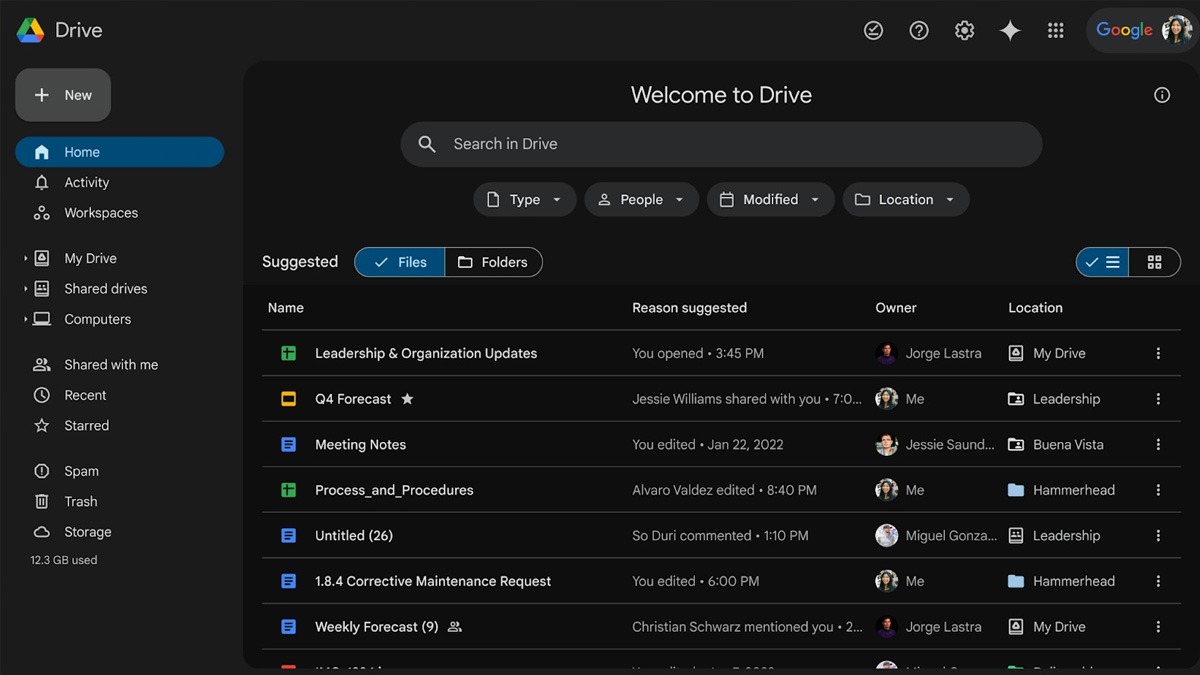Just In
- 10 hrs ago

- 10 hrs ago

- 11 hrs ago

- 12 hrs ago

Don't Miss
- Finance
 100% Dividend Declared: Record Date On 21st June; Buy The Specialty Chemical Stock?
100% Dividend Declared: Record Date On 21st June; Buy The Specialty Chemical Stock? - Sports
 Who Won Yesterday's IPL Match 38? RR vs MI, IPL 2024 on April 22: Yashasvi Jaiswal and Sandeep Sharma Star In One-Sided Victory
Who Won Yesterday's IPL Match 38? RR vs MI, IPL 2024 on April 22: Yashasvi Jaiswal and Sandeep Sharma Star In One-Sided Victory - Lifestyle
 Hanuman Jayanti 2024: Hanuman Chalisa Lyrics With Meaning, When And How Many Times To Recite It
Hanuman Jayanti 2024: Hanuman Chalisa Lyrics With Meaning, When And How Many Times To Recite It - Movies
 Karisma Kapoor Is ‘Summer Lovin’ Doll In Anavila Silk Kurta Set That You Can Swear By In This Scorching Heat
Karisma Kapoor Is ‘Summer Lovin’ Doll In Anavila Silk Kurta Set That You Can Swear By In This Scorching Heat - Education
 Ratan Tata's Social Endeavors Recognized With KISS Humanitarian Award
Ratan Tata's Social Endeavors Recognized With KISS Humanitarian Award - News
 US White House Considers Immigration Relief For Spouses Of US Citizens: What You Need To Know
US White House Considers Immigration Relief For Spouses Of US Citizens: What You Need To Know - Automobiles
 Top Tips – How To Charge Electric Scooters For Best Battery Life
Top Tips – How To Charge Electric Scooters For Best Battery Life - Travel
Kurnool's Hidden Gems: A Guide To Exploring India's Lesser-Known Treasures
Xiaomi Redmi K20 Pro Review: OnePlus 7 Killer?
Xiaomi is primarily known for its budget and mid-range mobile devices in India. The company's Redmi-series smartphones are loved by masses in India for their power-packed performance and sheer value-for-money package. The sub 20K products from Xiaomi generate the most revenue for the brand in the Indian market. But the brand is not ignoring the value flagship category, which is currently dominated by OnePlus and the likes of Samsung, Honor and Asus to some extent.


- Excellent Value For Money Deal
- Packs in All Key Trending Technologies
- Premium Metal-Glass Design
- Extremely Snappy And Powerful
- Good Battery Life
- Impressive Camera Performance
- Gorgeous Super AMOLED Screen
- Offers 3.5mm Headphone jack

- No Official IP Rating
- No OIS Support, EIS Could Use Improvements
- No Wide-angle Timelapse
- No microSD card Expansion Support
- Slow Face Unlock
The newly launched Redmi K20 Series smartphones target the value flagship buyer. Even though the new series is built on the same principle of delivering top-tier specs at an affordable price; the Redmi K20 and K20 Pro are also the most expensive Redmi devices from the house of Xiaomi. Primarily engineered to take on OnePlus 7 Series handsets, the new Redmi K20 smartphones have been launched at a starting price of Rs. 21,999 (K20 6GB RAM) and Rs. 27,999 (K20 Pro 6GB RAM) respectively. This is some aggressive pricing for smartphones that pack in top-tier specifications and bring so much to the table.
It's been a week that I have been using Redmi K20 Pro's 8GB+256GB variant as my daily driver and I must say that it even makes OnePlus 7 feel expensive, which until now was considered as 'The flagship killer'. Redmi K20 Pro offers a premium metal-glass construction, pop-up camera, Qualcomm Snapdragon 855, big battery and Super AMOLED panel at just Rs. 27,999 for the 6GB+128GB variant, and at Rs. 30,999 for the 8GB+256GB variant.
I know that spec-sheet sounds downright crazy for a handset priced this low, but does it translate to a flagship performance in real life? Let's find out.
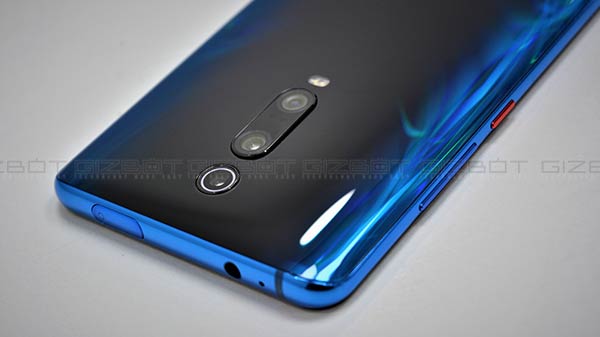
Design- Discrete And Premium
We have seen all sorts of gradient patterns in the last one year. Some managed to make an impression whereas some were just too vibrant and outlandish for our liking. At the end of the day, it all depends on personal preference of a buyer but having a variety is always appreciated. This brings us to the new Redmi K20 Series devices, which carry the most discrete gradient finish ever seen on a smartphone. The gradient pattern on Redmi K20 series devices is inspired from ice (Glacier Blue variant) and fire (Flame Red variant) and rests under a 3D curved Gorilla Glass 5. Both variants stand out as the gradient pattern look mesmerizing.
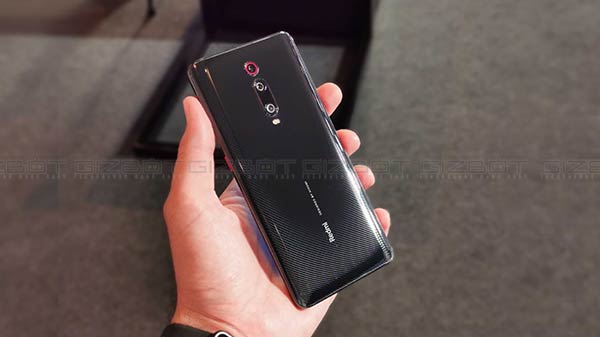
Kevlar-Carbon Black Variant Offers Subtle Look and Feel
We got the Glacier Blue variant as review unit and it looks striking. While the Aura Prime design and new gradient finishes on K20 Series make an instant impression; I doubt it will please every smartphone enthusiasts. If you prefer a slightly subtle look and feel, Xiaomi also offers Redmi K20 Pro in Carbon Black variant. The Black variant comes in Kevlar patterned Black finish for a more mainstream look and feel.

Super Slippery But Fits Well In Hands
I want to flaunt the crazy flame gradient pattern; however, Redmi K20 Pro is extremely slippery in hands due to glass-metal construction. I wouldn't recommend using this handset without a case. Thankfully, the company ships the phone with a good quality plastic case, which unlike those TPU cases looks very premium and does not add any extra bulk to the device.
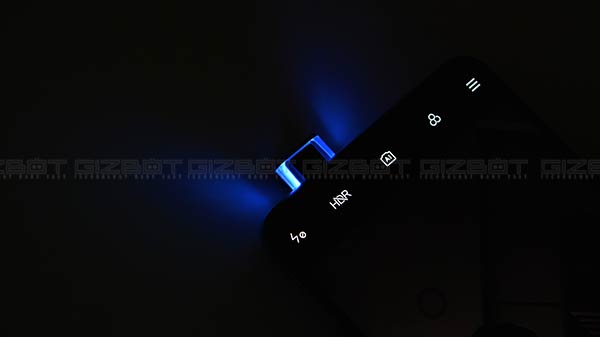
Motorized Pop-up Camera With LED Lights
Pop-up cameras are not new to the smartphone world but Xiaomi has made things interesting by integrating two LED strips on the edges of the slider. A notification LED is also added on the top. The Flame Red variant gets Red LEDs while the Glacier Blue gets Blue colored LED strips and both add an X-factor to the overall look and feel of the phones. As far as durability is concerned, the camera slider assembly is claimed to be tested to work 300,000 times, which accounts to 8 years lifetime if you take 100 selfies a day. Do you?
And like the OPPO and Vivo devices, the pop-up camera assembly on Redmi K-Series also gets drop protection. If the phone drops from your hands, the sensor will detect the sudden change in height and the pop-up camera assembly will retract back to its housing to prevent the damage. In a nutshell, it's not going anywhere unless your phone falls on concrete or suffers some sort of damage. It is worth mentioning that the pop-up camera module feels a millisecond slower when compared to OnePlus 7 Pro though.
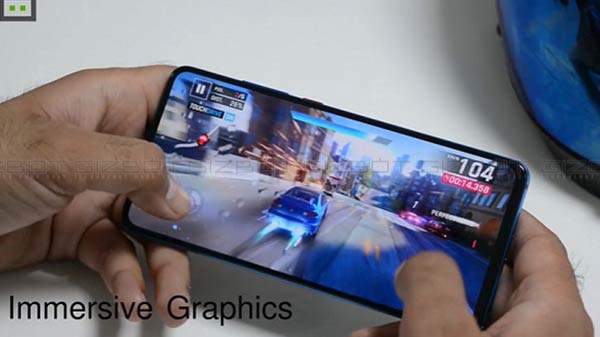
In-Screen Fingerprint Scanner
The optical-image based in-screen fingerprint scanner placed under the OLED panel is snappy and very accurate. It might not be the fastest under-the-display biometric solution out there but it's not slower by any means. The scanner also managed to recognize my fingerprint every time without any miss. It's very accurate.
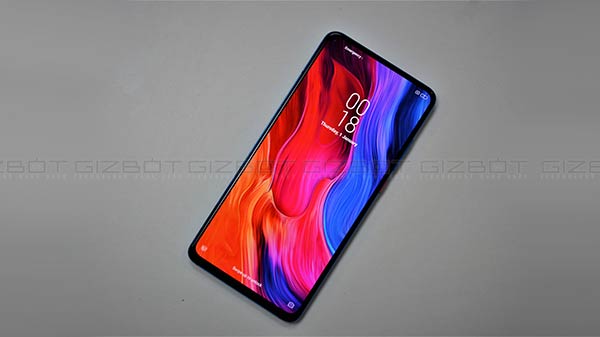
Display- 6.39” FHD+ Super AMOLED Display
The notch-free Super AMOLED display on Redmi K20 Pro is a visual treat for users who spend a lot of time-consuming multimedia content. The OLED panel's deep blacks ensure rich colors and good viewing angles. The screen also gets fairly bright- 640 nits (as company claims) to offer a comfortable outdoor viewing experience. The bezels surrounding the display are quite thin and ensure ample real-estate (claimed 91.9% screen-to-body ratio) to make video playback, gameplay and reading a delight.
The AMOLED screen on Redmi K20 Pro supports DCI-P3 color gamut and DC dimming. Unlike PWM (Pulse Width Modulation) dimming, DC dimming reaches a higher level of low brightness to prevent eye fatigue. Technically, DC dimming affects the AMOLED screen's color reproduction at lower brightness levels; however, the effect is very negligible on Redmi K20 Pro's OLED display.
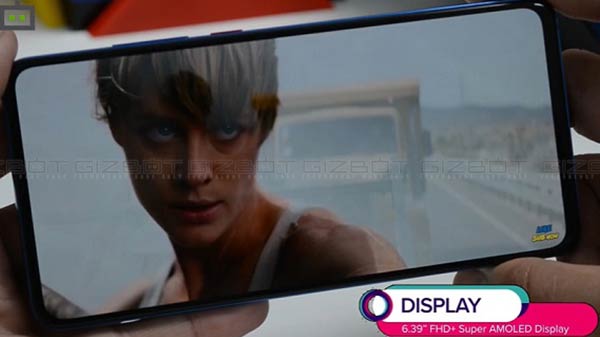
Widevine L1 Certified, HDR 10 Content, Always-on mode
The Super AMOLED display on Redmi K20 Pro also supports HDR 10 content. It is also Widevine L1 certified to stream high-resolution content on media-streaming applications. Like Samsung's Galaxy series and OnePlus devices, the OLED panel on Redmi K20 Pro also offers ‘Always-On Mode' to display important content on the locked screen. You can choose from a variety of always-on animations to display the content on the locked screen. For protection, Redmi K20 Pro uses Gorilla Glass 5. It is not the latest version of protective glass from Corning but serves well to protect the panel from damages.

Computing And Multitasking Performance
If I have to describe the overall performance of Redmi K20 Pro in two words, I would say it's snappy and powerful. Backed by the latest and greatest 7nm Snapdragon 855 CPU, the smartphone feels super snappy and is always ready to effectively execute the tasks you throw at it. The SD855 CPU features 8X Kryo 485 cores and is paired with 6GB and 8GB LPDDR4X RAM to handle multitasking.
We got the 8GB RAM variant to test and its one-of-the fastest flagship smartphone we have tested to date. The UI navigation, multitasking to up to 20 apps at a time and all sorts of smartphone-related tasks are handled efficiently without any performance slowdown. Redmi K20 Pro feels as fast as OnePlus 7 Pro which is priced much higher.

Benchmarks Tests
The benchmarks tests tell the same story. Redmi K20 Pro scored a whopping 3,11,134 in Antutu, which is simply crazy. The handset touched 10,150 in PC Mark Work 2.0 and scored 5,585 in 3D Mark Sling Shot Extreme OpenGL ES 3.1 and 4,305 in Vulkan test, which evaluates the GPU performance. The 3D Mark clearly says that the Redmi K20 Pro can outperform 99% of the devices in the market. These numbers are among the highest synthetic scores we have recorded in a while on a smartphone.

Gaming Performance
I have been playing all sorts of games on Redmi K20 for over a week now and I am super impressed with the overall gaming performance of the device. Be it Injustice 2, Asphalt 9 or the sensational PUBG, the games run on high settings by default and display jaw-dropping visuals on the vibrant Super AMOLED panel. I did not face any lags or frame drops while playing matches in PUBG and Injustice 2.
The handset maintained an optimal temperature even after 4 back-to-back rounds in Evoground mode on PUBG. The glass rear panel got slightly warm, which is quite acceptable if you are carrying out long and continuous gaming sessions in summers in Delhi NCR. Overall, you can play any game on Redmi K20 Pro and it will deliver a lag-free performance throughout the gameplay. Xiaomi will also roll out Game Turbo feature to further the gaming performance on the Redmi K20 series.

Software Performance
The Redmi K20 Pro runs on MIUI 10.3.1 based on Android Pie. If you are familiar with Xiaomi's custom skin, you will feel like home. The MIUI 10.3 is running wonderfully on the Redmi K20 Pro, unlike the Redmi Note 7 Pro which stuttered very often. The UI navigation is smooth and gestures work effectively. In fact, gestures on Redmi K20 Pro are among the finest we have tested on an Android phone. Redmi K20 Pro comes installed with Poco launcher out-of-the-box, which further fuels the debate that Redmi k20 Pro is the Poco F2 everyone was waiting for.
There's a system-wide dark mode that turns everything Black. With High-contrast mode on, the dark mode makes the overall UI look just wonderful. Besides, you get Xiaomi's rich Theme store and signature useful software additions like Second Space, Dual apps, App lock, etc.
Redmi K20 Series also comes pre-installed with an intuitive wallpaper Carousel app- Glance. The application gives the lock screen a visual makeover by adding rich informative content categorised in various themes such as sports, wildlife, lifestyle, and fashion to name a few. Every time you wake up the phone, the wallpaper refreshes with new content.
It's actually better than just a boring screen with no useful content of any sort. If you are not interested in reading content, you can customize the app to just show high-resolution images shot by world-renowned photographers.
I also liked the fact that the app allows you to share the story or the wallpaper through social media platforms like Instagram, Facebook etc. Glance app comes pre-installed on Xiaomi devices; however, you can install it from Google Play Store for any Android smartphone.
Overall, MIUI has come a long way and it feels much refined on the new Redmi K20 series.

Triple-Lens Rear Camera- 48MP+13MP+8MP
Redmi K20 Pro boasts a 3-lens camera setup at the rear panel. The vertically stacked camera assembly houses 48MP lens (f/1.8, 1/2", 0.8µm, PDAF/Laser AF- Sony IMX 586), 8 MP Telephoto Lens (f/2.4, 1/4", 1.12µm, PDAF/Laser AF, 2x optical zoom, and a 13 MP Ultrawide lens (f/2.4, 1/3", 1.12µm). The camera can shoot videos in 4K-2160p@30/60fps, 1080p@30/120/240fps, and 1080p@960fps. You can also record slow-motion videos at 120fps and 240fps. All three cameras can shoot in 4K but the camera cannot record timelapse in wide-angle mode. For still shots, the 13MP wide-angle lens covers 124.8 degree field-of-view.
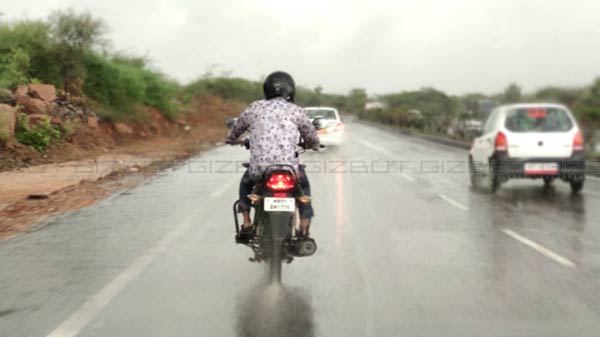
Daylight Performance
By default, the camera captures 12MPpixel-binned shots which show good details and plenty of dynamic range in daylight shots. Some shots look slightly saturated but the camera settings allow you to tweak contrast, sharpness and saturation, which solves the problems with color output. You can enable HDR mode to bring out some more detailing and information in darker parts of the frame. The 8MP telephoto lens takes you closer to the subject but I noticed some noise in 2X images even in daylight. Colors seemed accurate though.

Wide-angle Shots
The 13MP wide-angle lens covers a good 124.8 degree field-of-view. It adds a new perspective to your imaging skills. The wide-angle shots look good on AMOLED panel, only when they are shot in daylight. Lens distortion is very well controlled. The 13MP wide-angle lens fails to impress in low-light.

Portraits On Redmi K20 Pro
The bokeh effect looks natural and subject detection is very good for most of the part. You can control the amount of bokeh by controlling the aperture in real-time and can also apply a variety of background effect after taking shots.
During testing, the camera struggled to focus on subject when I tried taking a shot against the light. The sensor couldn't focus on the main subject and only kept background in pin sharp focus. This mostly happened in uneven lighting and precisely when the shot was framed against the light.

Low-Light Camera Performance
The dedicated Night mode brings out more information in the darker areas of the frame. Check out the above image. The shot captured with Night mode enabled show better details and sharpness. The long-exposure algorithm makes you wait for an extra second but delivers a brighter overall image output. Sadly, you cannot zoom-in in Night mode and also cannot capture wide-angle shots as the feature only works with the 48MP sensor.

Video Performance
I am quite content with the clarity, detailing and color output in video footage clarity; however, the lack of OIS and ineffective EIS is a big disappointment. Resultant, the videos shot on Redmi K20 Pro look wonderful as long as the phone is mounted on a tripod or is kept in a steady state in handheld shots. The moment you start walking while shooting handheld videos, the footage gets very shaky and become almost unusable for serious work. The built-in EIS could use some massive improvements on Redmi K20 Pro.
Redmi K20 Pro can shoot 4K videos at 60fps and 30fps, 1080p@30/60fps and slow-motion videos at 960/240/120fps. The 960fps slow-motion footage fails to impress. You also cannot shoot timelapse videos in wide-angle mode. The video output in higher resolutions is crisp and full of rich colors. Dynamic range is also quite impressive. It is worth mentioning that Redmi K20 cannot shoot 4K videos at 60fps. The limit maxes out at 4K 30fps.
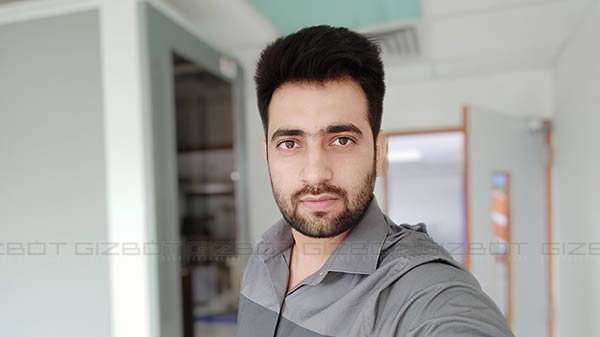
20MP Pop-up Selfie Camera Performance
Selfies captured on 20MP front-facing camera show impressive details. Contrast is also on point and the sensor also does not blow out the bright areas on the face. You can also enable ‘Auto HDR' to ensure slightly better control over shadows and highlights while taking selfies in harsh lighting. Xiaomi has also thrown in all sorts of modes and filters to let you experiment with the images. You can also enable Beautify mode to tweak skin tones and other elements of your face. If you prefer a natural image out, simply disable all beautification filters and modes. The software-driven bokeh mode in portraits looks quite pleasing and natural.
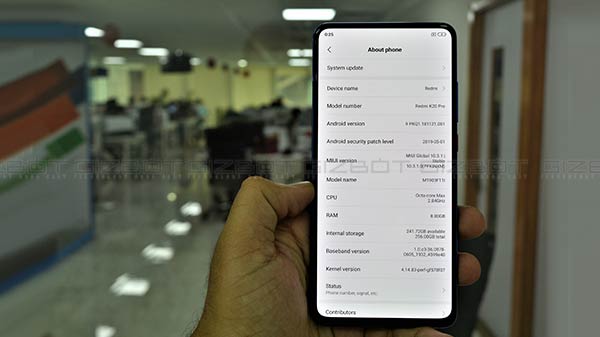
Battery Life And Audio Performance
Redmi k20 Pro managed to last an entire day with 90% battery charge. The phone can survive up to 30 hours on intense usage. If you don't stream videos on loop and play long gaming sessions, the 4,000mAH battery cell can easily last for more than a day. The company is shipping an 18W charger in the box, which is nowhere close to OnePlus 7's and Huawei's fast-charging speeds. The bundled charger took more than 90-min to refuel the 4,000 mAh battery from zero to 100%. You can buy the 27W charger separately at Rs. 499 from Mi.in that will offer much faster-charging speeds, close to 55% battery power in about 30 minutes.
As far as audio performance is concerned, Redmi K20 Pro's single bottom-firing speaker produces very loud audio, thanks to the big chamber. It is one-of-the loudest sounding speaker in sub 30K price bracket. However, the sound produced feels slightly muffled if you compare the output with handsets carrying dual-stereo speakers. I wish the earpiece could also be used as a sound-producing unit. Nevertheless, the speaker can still get very loud and can easily fill a small room. You can enjoy movies and play games even without a pair of headphones. The MIUI 10 also offers a variety of presets and a feature-rich equalizer, which can be accessed in ‘Headphone & audio effects' section in the settings menu.
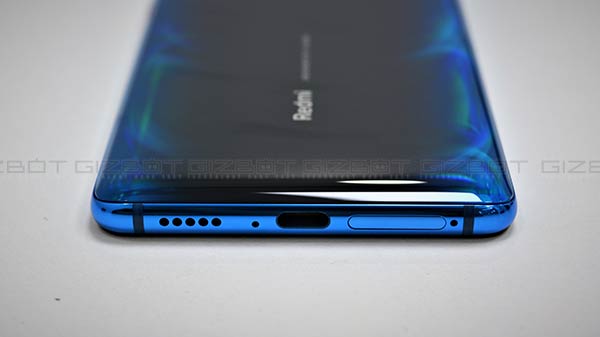
Connectivity And Call Quality- Bluetooth v5.0 and Dual GPS
For connectivity, the Redmi K20 Pro offers active 4G on both SIM cards. We used the phone on Airtel 4G network in Delhi-NCR and experienced brilliant call quality. The smartphone also offers all required connectivity features such as Wi-Fi 802.11 a/b/g/n/ac, Bluetooth v5.0, NFC, Infrared, USB Type-C, 3G, and 4G (Band 40). Interestingly, Xiaomi has also equipped the Redmi K20 Pro with Dual GPS which allows for better accuracy while using GPS-based applications.

Verdict
Redmi K20 Pro is sheer value for money offering. It reminds me of the good old days of first Xiaomi handset- Mi 3 that changed the smartphone landscape overnight. The fact that it offers all key trending mobile technologies, flagship Snapdragon 855 chipset and a power-packed performance at a starting price of Rs. 27,999 makes it a real flagship killer. Redmi K20 Pro is a brilliant alternative to OnePlus 7 Pro and brutally kills the OnePlus 7. Both the Chinese companies are now in the big game and OnePlus has to pull up a new card to stay in the battle. Overall, OnePlus 7 series handsets now feel expensive after the launch of Redmi K20 series devices. It makes very less sense to invest in OnePlus 7 Pro unless you fancy a 90Hz display and OxygenOS. The higher variant of Redmi K20 Pro retails at Rs. 30,999 and offers all the bells and whistles of a fully-loaded powerful value flagship smartphone.
-
99,999
-
1,29,999
-
69,999
-
41,999
-
64,999
-
99,999
-
29,999
-
63,999
-
39,999
-
1,56,900
-
79,900
-
1,39,900
-
1,29,900
-
65,900
-
1,56,900
-
1,30,990
-
76,990
-
16,499
-
30,700
-
12,999
-
14,999
-
26,634
-
18,800
-
62,425
-
1,15,909
-
93,635
-
75,804
-
9,999
-
11,999
-
3,999











































